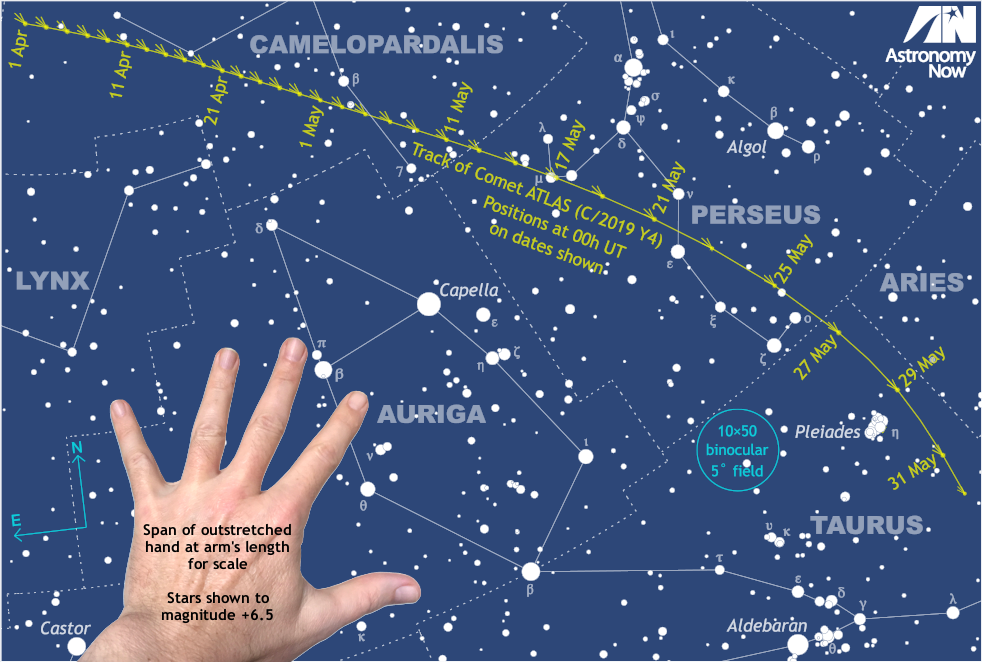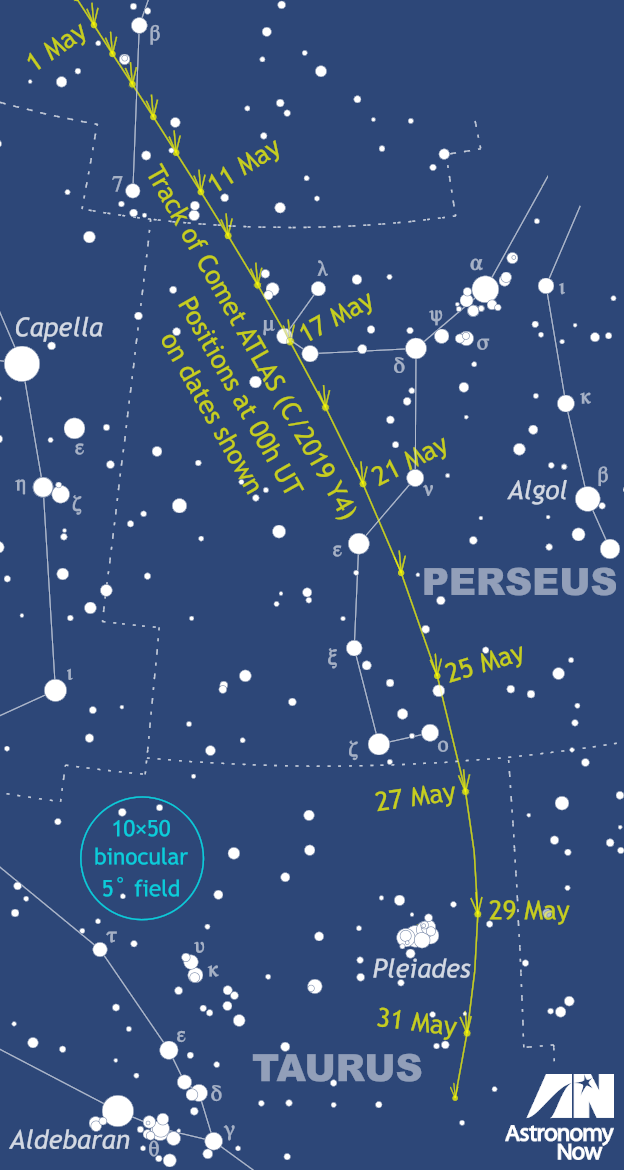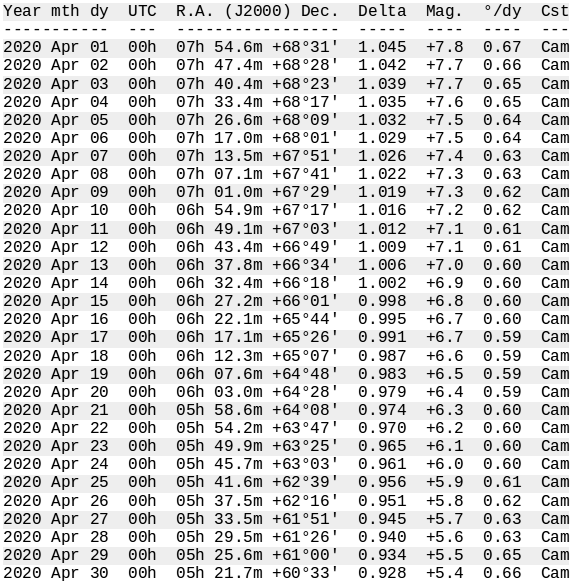Get ready for bright Comet ATLAS (C/2019 Y4) in the northern spring sky! – Astronomy Now Online

Any comet observer knows that these primordial, icy denizens of the deep Solar System are frequently faint and unpredictable. This is, of course, part of their appeal: you never know when a new one will catch you by surprise by appearing out of nowhere and suddenly surge in brightness as it approaches the Sun, hopefully developing a tail visible to the naked eye.
Northern Hemisphere skywatchers are getting excited about Comet C/2019 Y4, discovered at Mauna Loa in Hawaii on 28 December 2019 by the Asteroid Terrestrial-impact Last Alert System (ATLAS) when it lay among the stars of Ursa Major. Now designated Comet ATLAS (C/2019 Y4), astronomers soon noted that its orbit is very similar to C/1844 Y1, the celebrated ‘Great Comet’ of 1844. If Comet ATLAS is a fragment of C/1844 Y1, we could be in for a treat.
Currently (2 April) shining with a greenish glow around magnitude +7.5 and traversing the somewhat obscure northern constellation of Camelopardalis (the Giraffe) at a rate of about two-thirds of a degree per day, C/2019 Y4 has brightened 6000-fold in the last two months. If it continues at the predicted rate, the comet could be a naked-eye object from rural locations around the time of new Moon on 23 April.

Observing and astroimaging prospects
If you haven’t already done so, click here to view or download our scalable A4 PDF finder chart for C/2019 Y4, valid until early June. By mid-April the comet lies within 1 astronomical unit of Earth.
At 0h UT (1am BST) on 2 and 3 May, Comet ATLAS lies 1½ degrees southeast of fourth-magnitude star beta (β) Camelopardalis, which despite its Bayer designation is actually the brightest star in the constellation.
On 12 May, C/2019 Y4 crosses the constellation border into Perseus. At this time it could be the third magnitude and moving relative to the stars at a rate of a degree (or twice the width of a full Moon) per day.
At nautical dusk on Saturday, 16 May (around 11pm BST in the heart of the UK), the possibly second-magnitude comet lies just 12 arcminutes, or one-fifth of a degree from magnitude +4.1 star mu (μ) Persei, but the pair will be just 18 degrees high in the north-northwest.
New Moon occurs on 22 May. Comet ATLAS passes closest to Earth at 10h UT (11am BST) on Saturday, 23 May at a distance of 0.781 astronomical units, or 117 million kilometres, traversing the constellation of Perseus at a rate of 2 degrees per day.
C/2019 Y4 remains circumpolar for an observer in the heart of the British Isles up until about 24 May. Thereafter, UK observers will need to look for it in a rapidly brightening sky around the onset of civil twilight about 4am BST, some 50 minutes before sunrise. If it brightens according to predictions, the comet should have a total magnitude similar to Venus and located very low in the northeast in bright twilight.
C/2019 Y4 passes into the constellation of Taurus on 26 May and two days later a combination of distance and favourable viewing geometry means that it attains a peak rate of motion with respect to the stars of 2½ degrees per day.
Comet ATLAS and the Pleiades
C/2019 Y4 passes just 2 degrees from the Pleiades (Seven Sisters, or M45) open star cluster on the UK morning of 29 May. But before you get too excited about the prospect of getting a superb astrophotograph of the conjunction, consider that at this time M45 lies just 9 degrees from the Sun in Taurus, so the cluster and comet lie too close to the Sun to be seen together from Earth.
Perihelion and orbit
The comet passes closest to the Sun around 00:30 UT (1:30am BST) on Sunday, 31 May at a distance of 0.2528 astronomical units, or almost 38 million kilometres. Before this perihelion, C/2019 Y4 had a very eccentric orbit (e = 0.99923) inclined by 45.38 degrees to the ecliptic with a period of about 4,800 years. Due to gravitational perturbations, its modified outward orbit is likely to have a period of around 5,200 years.







